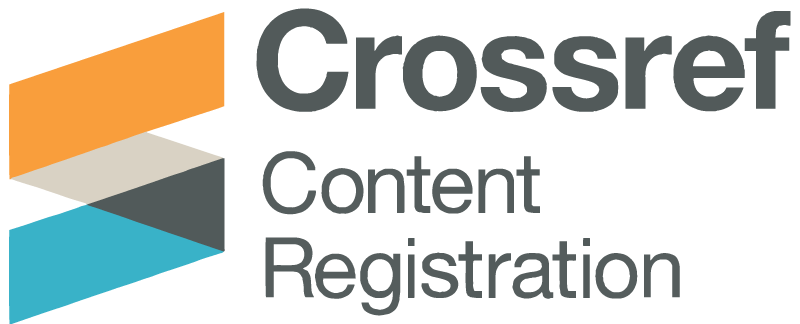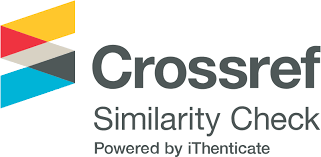التحليل الكمي وتقييم التلوث بالمعادن الثقيلة (الرصاص، الكادميوم، الكروم، والنحاس) في مياه الآبارالجوفية في منطقة النشيع- بلدية زليتن، ليبيا
DOI:
https://doi.org/10.59743/jau.v10i1.2176الكلمات المفتاحية:
مياه جوفية، النشيع، زليتن، الآبار، الكروم، الكادميوم، الرصاص، النحاسالملخص
تهدف هذه الدراسة لمعرفة مدى تلوث المياه الجوفية بمنطقة النشيع ببلدية زليتن بالعناصر الثقيلة المتمثلة في (الرصاص والكادميوم والكروم والنحاس) ،بعد ملاحظة ارتفاع منسوب المياه الجوفية وخروجها على السطح وتلوثها بمياه الصرف الصحي والصناعي ، أجريت الدراسة في شهر فبراير 2025 م ، جمعت العينات من عدد 08 آبار، باستخدام برنامج GPS تم تحديد مواقع إحداثيات تلك الآبار على الخريطة الجغرافية للمنطقة، نقلت العينات لجامعة مصراتة مركز البحوث الحيوية والطبيةلإجراء الاختبارات المطلوبة والمتمثلة في تركيز الأملاح الذائبة الكلية (TDS)، الموصلية الكهربائية (EC)، تركيز الأس الهيدروجيني (pH)، والعناصر الثقيلة الرصاص (Pb) والكادميوم (Cd) والكروم (Cr) ،والنحاس(Cu ) ولتحديد مدى تلوث المياه بهذه المكونات قورنت النتائج المتحصل عليها بالمواصفات القياسية الليبية لمياه الشرب، أظهرت النتائج أن قيم(pH) كانت ضمن المواصفات القياسية الليبية لمياه الشرب، أما(TDS) و(EC)، والعناصر الثقيلة لكل من الرصاص (Pb) والكروم (Cr) يفوق الحد الأقصى المسموح به بموجب المواصفات القياسية الليبية لمياه الشرب, بينما العنصران الكادميوم (Cd) والنحاس (Cu ) كانا ضمن الحدود المسموح بها،وخلصت الدراسة أن جودة مياه جميع الآبار المدروسة بين الرديئة إلى الغير ملائمة للشرب والاستهلاك البشري والاستخدام المنزلي
التنزيلات
المراجع
- Abaza, H. F. Y. (2015). Evaluation of groundwater quality and its suitability for domestic and agricultural purposes in the Al-Osayta area, Al-Jabal Al-Akhdar, Libya (Master's thesis). Department of Natural Resources and Environmental Sciences, Libya
- Aburawi, M. (2024). Evaluation of the concentration of some heavy metals (chromium, copper, and iron) in groundwater in the city of Zliten. Journal of the College of Education, Al-Marqab University, 24, 314-321.
- Al-Abdali, B., and Al-A’ib, M. D., and Al-Zarbi, A. Kh. (2020). Evaluation of groundwater quality in the Barsis area in Jabal Al Akhdar, Libya. Libyan Journal of Environmental Science and Technology, 2, 11-16. DOI: https://doi.org/10.63359/ssdf2109
- Al-Jali, J. A., and Suleiman, M. M. (2023). Spatial analysis of groundwater quality in the municipality of Bir al-Ashhab. Sirte University Journal for Human Sciences.
- American Public Health Association. (1992). Standard methods for the examination of water and wastewater. APHA
- Amshahr, A. A., and Attaf, S. F. (2021). Evaluating and classifying the quality of well water in the Zamzam Valley region and its suitability for drinking and irrigation purposes. Sebha University Journal of Research and Applied Sciences, 20, 142-148. doi: 10.51984/JOPAS.V20I4.1737. DOI: https://doi.org/10.51984/jopas.v20i4.1737
- Benoff, S., Jacop, A., & Hurley, I. R. (2000). Male infertility and environmental exposure to lead and cadmium. Human Reproduction Update, 6(2), 107-121. DOI: https://doi.org/10.1093/humupd/6.2.107
- Center for Biological and Medical Research, University of Misrata (office of bio sciences and medical)
- European Commission, Directorate-General for Health and Food Safety (DG SANTE). (2014). Scientific Opinion on the risks to human health related to the presence of chromium in food.
- Ibrahim, D., Blacke, F., Andrea, W., & Daniel, E. (2006). Heavy metal poisoning: Clinical presentations and pathophysiology. Clinics in Laboratory Medicine, 26(1), 67-97. DOI: https://doi.org/10.1016/j.cll.2006.02.003
- Islam, A. M. (2001). Chemical pollution and the chemistry of pollution. Dar Al-Fikr Al-Arabi.
- Johnson, K., et al. (2015). Cadmium sorption onto calcite and quartz. Journal of Hydrology, 521, 342-351.
- Joubran, M. O., El-Wadii, R. B., &Aburawi, M. (2025). Evaluation of the water quality of some underground wells in the Al-Nashaa area in the city of Zliten after the rise in water levels. Journal of the Academic Forum of Applied Sciences, Folder,9 (1) 61-74.
- Libyan National Center for Standardization and Metrology. (2020). Bottled drinking water (LNCS No. 10). (2nd ed.)
- Shaksham, N. M., Al-Samarrai, E., and Al-Barshani, M. A. (2020). Evaluating groundwater quality using the WQi index for some areas at the foot of the mountain in Libya: a case study. International Journal of Science and Technology, 23.
- Shuaiwi, A. M., et al. (2016). Evaluating the quality of drinking water from wells in the Qirat al-Shati area, chemically and microbiologically. Al-Marqab University Publications.
- Smith, J., et al. (2018). Cadmium removal from groundwater using hematite and goethite. Environmental Science & Technology, 52(11), 6311-6318.
- The Libyan National Center for Specifications and Standards. (2020). MQL 2020:10. Second version.
- Thompson, R., et al. (2020). Cadmium sorption onto calcite, quartz, and hematite. Science of the Total Environment, 715, 137321.
- WHO, World Healthy Organization, 2003, Guide line for drinking water quality Recommendation Vol. 4th ed, p36.
- Woody, C. A. (2007). Copper effects on freshwater food chain and salmon: A literature review. Fish. Res. Cons. (F.R.C.), 18
التنزيلات
منشور
إصدار
القسم
الرخصة
الحقوق الفكرية (c) 2025 مجلة الجامعة الأسمرية

هذا العمل مرخص بموجب Creative Commons Attribution 4.0 International License.
تتعلق الحقوق بنشر وتوزيع البحوث المنشورة في مجلة الجامعة الأسمرية، حيث توضح للمؤلفين الذين نشروا مقالاتهم في مجلة الجامعة الأسمرية، كيفية استخدام أو توزيع مقالاتهم، والاحتفاظ بجميع حقوقهم في المصنفات المنشورة، مثل (على سبيل المثال لا الحصر) الحقوق التالية:
- حقوق الطبع والنشر وحقوق الملكية الأخرى المتعلقة بالمقال المقدم، مثل حقوق براءات الاختراع.
- استخدام البحث المنشور في مجلة الجامعة الأسمرية في الأعمال المستقبلية الخاصة بالمؤلفين، بما في ذلك المحاضرات والكتب، والحق في إعادة إنتاج المقالات لأغراضهم الخاصة، والحق في الأرشفة الذاتية لمقالاتهم.
- الحق في الدخول في مقال منفصل، أو للتوزيع غير الحصري لمقالاتهم مع الإقرار بنشره الأولي في مجلة الجامعة الأسمرية.
الحقوق الفكرية: وفق الرخصة الدولية للأعمال الإبداعية المشاعة، النسخة 4.0.
بيان الخصوصية: سيتم استخدام الأسماء وعناوين البريد الإلكتروني التي تم إدخالها في موقع مجلة الجامعة الأسمرية للأغراض المذكورة فقط والتي استخدمت من أجلها.










